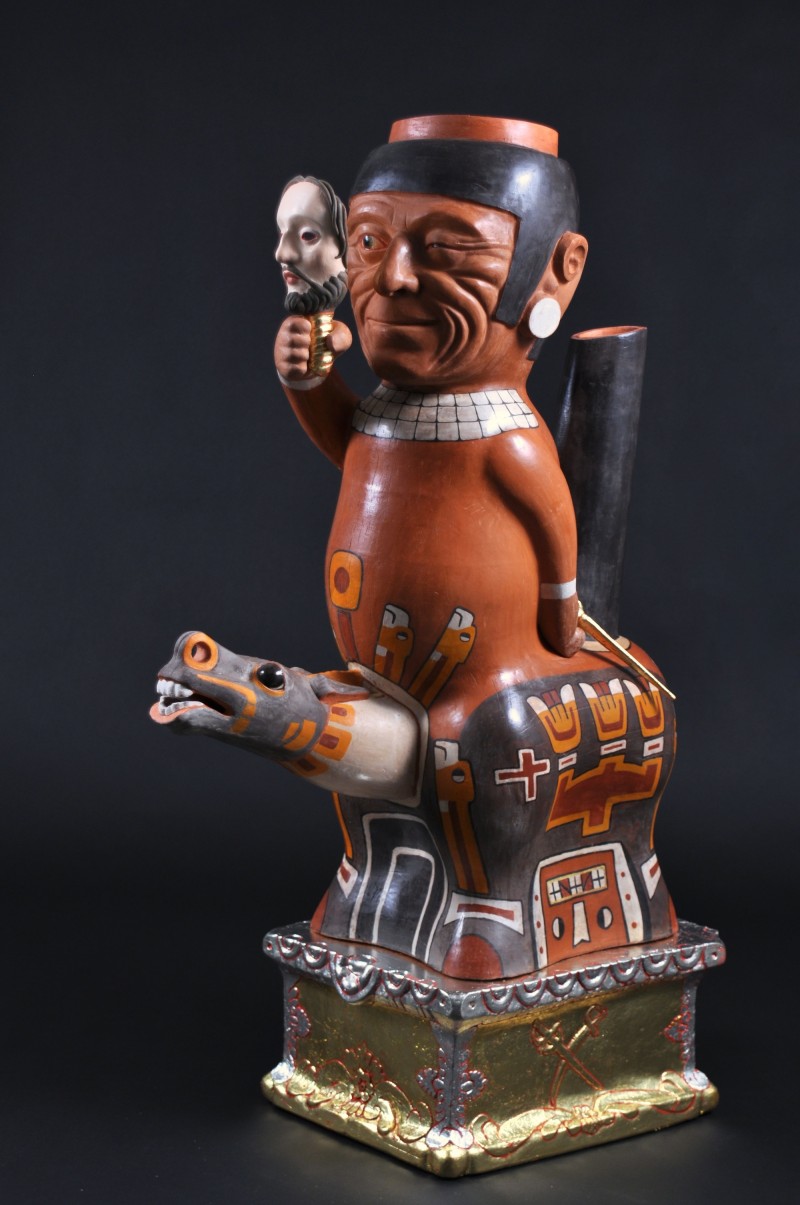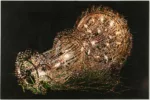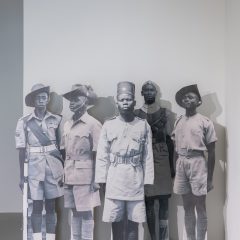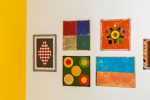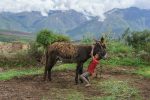Kukuli Velarde is fearless in her artmaking. Her paintings and ceramic sculptures are daring and seductive mash-ups of art history, the history of colonization, indigeneity, the abject, beauty, and love. Many of the Peruvian-born, Philadelphia artist’s paintings are nude self-portraits showing Velarde in various roles from Venus to saints and martyrs from the European canon. In still other works, she may be a pre-Columbian sculpture.
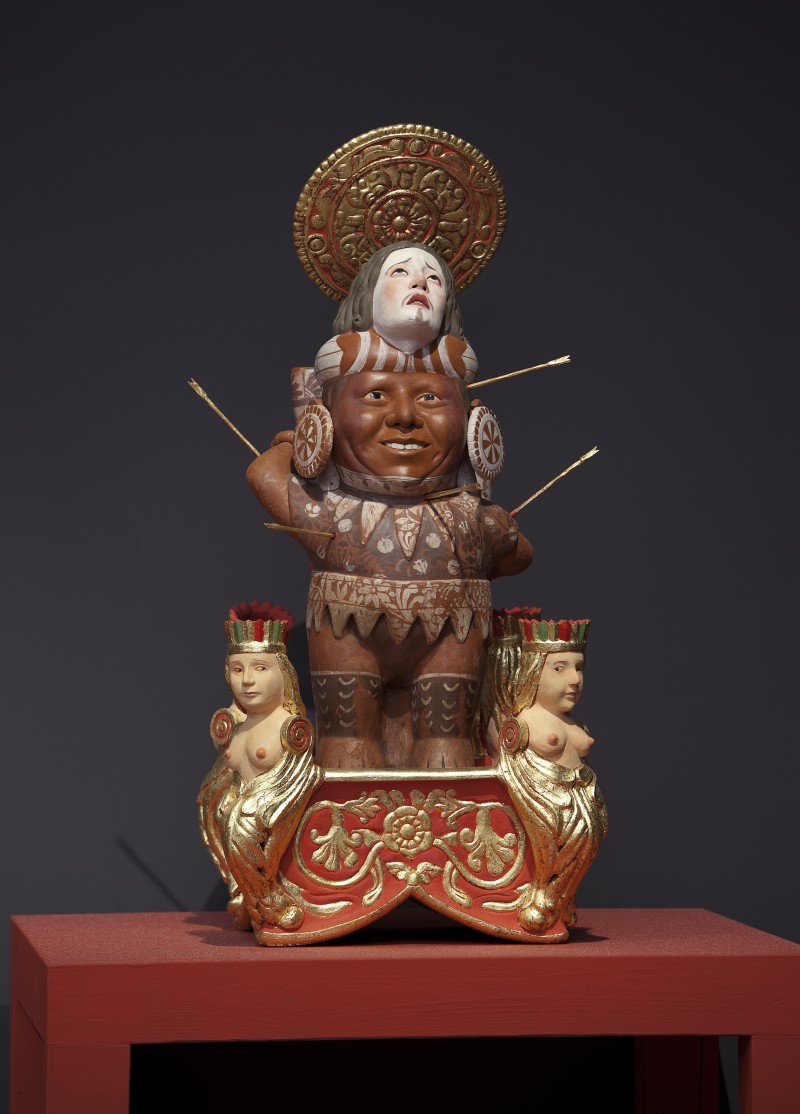
Often, her large oil-on-aluminum paintings show the artist’s body as patched-up or severed, inscribed upon and bloodied, nursing her child and husband, or sitting on the toilet while accompanied by flying dogs.
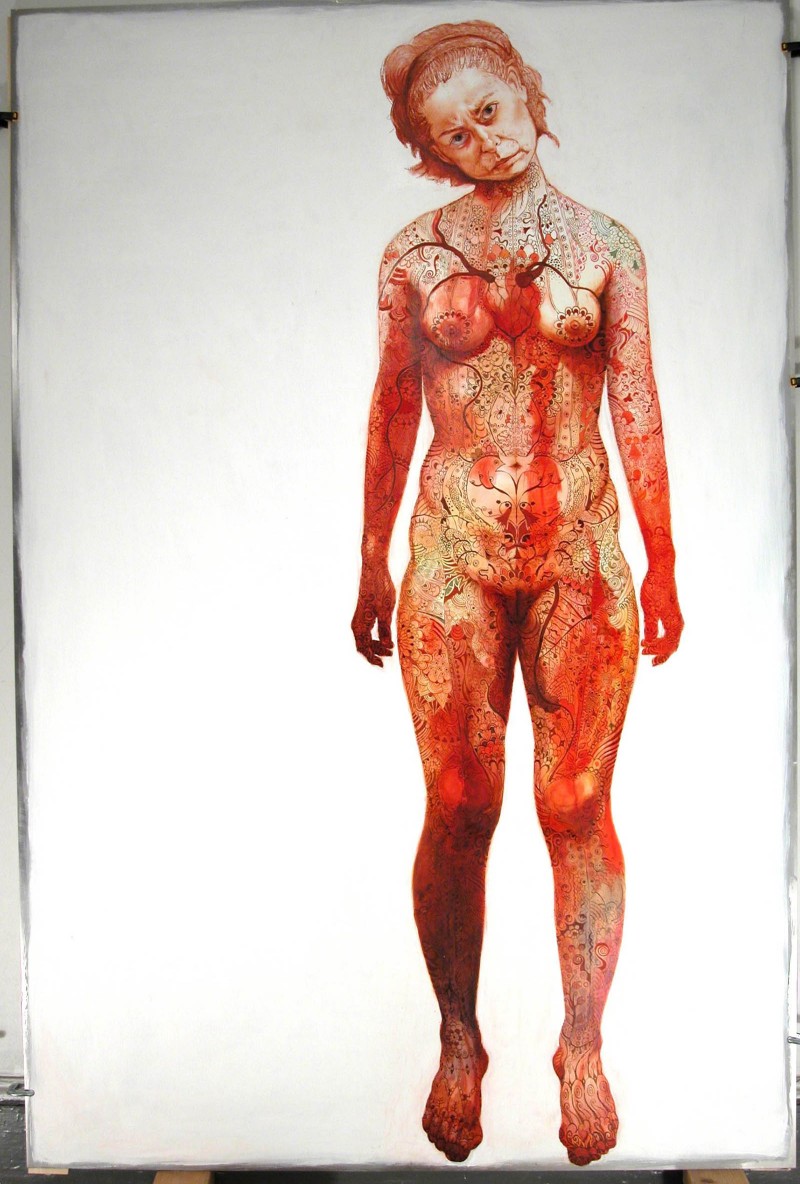
Velarde has had major solo exhibitions from Lima, Peru to Kansas City and New York. Why she has not had a significant show of her work in her hometown of Philadelphia is curious, especially since in the last several years she has been awarded many prestigious grants here, including the Pew and two Leeway Foundation awards; she is also well-known among local curators and fellow artists.
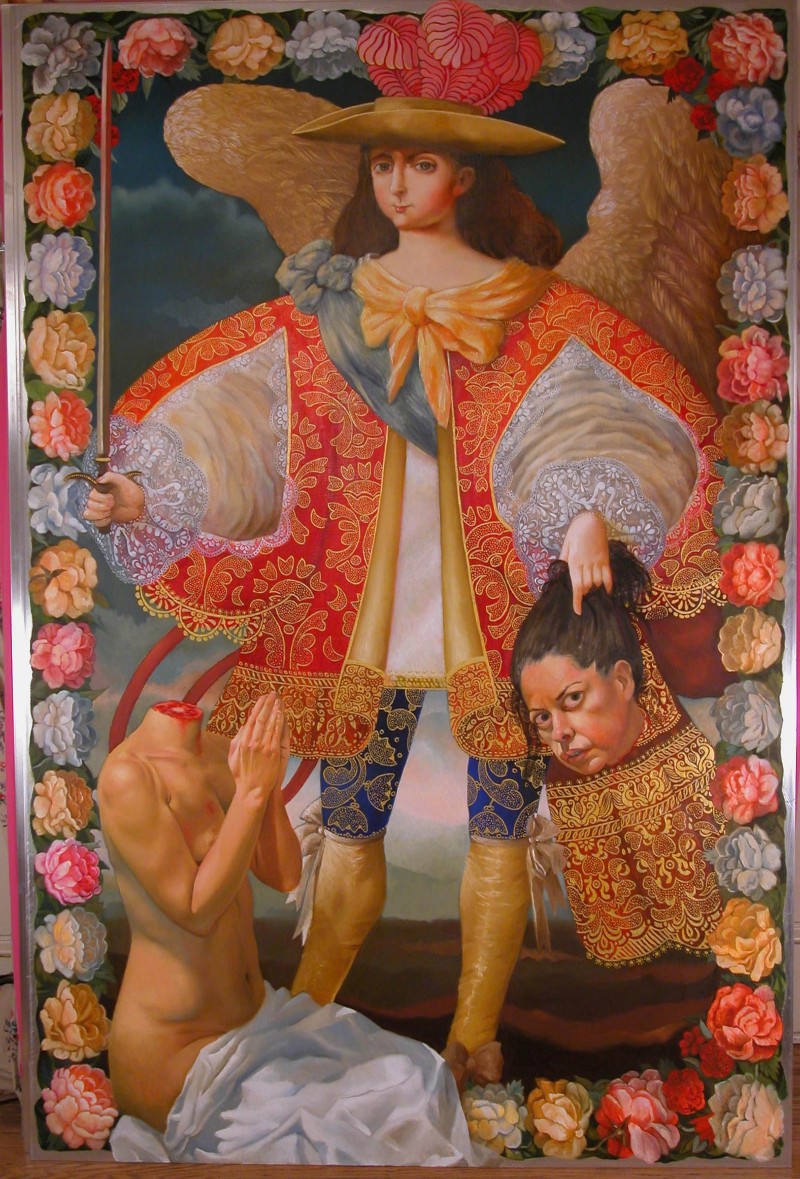
Most recently, Velarde received the 2015 John Simon Guggenheim Foundation Fellowship in support of her most recent ceramic sculptures, titled Corpus. Corpus is a body of work consisting of 15 large, individual terracotta figures, each of which embodies in some way pre-Columbian Wak’as (sacred entities from Cusco, Peru representing the cosmic and earthly), and includes Baroque-era Spanish and Catholic items, too: a halo, for example. These sculptures neither plunder nor culturally appropriate the indigenous communities of Velarde’s birthplace, as we learn from her website. Rather, they are syncretic vessels forged by the artist as a way to carry ancient beliefs and stories into the present era and boldly suggest that despite relentless Euro-Catholic colonization and indoctrination, indigenous peoples, their history, and indeed their artwork, will continue to maintain, survive, and thrive.
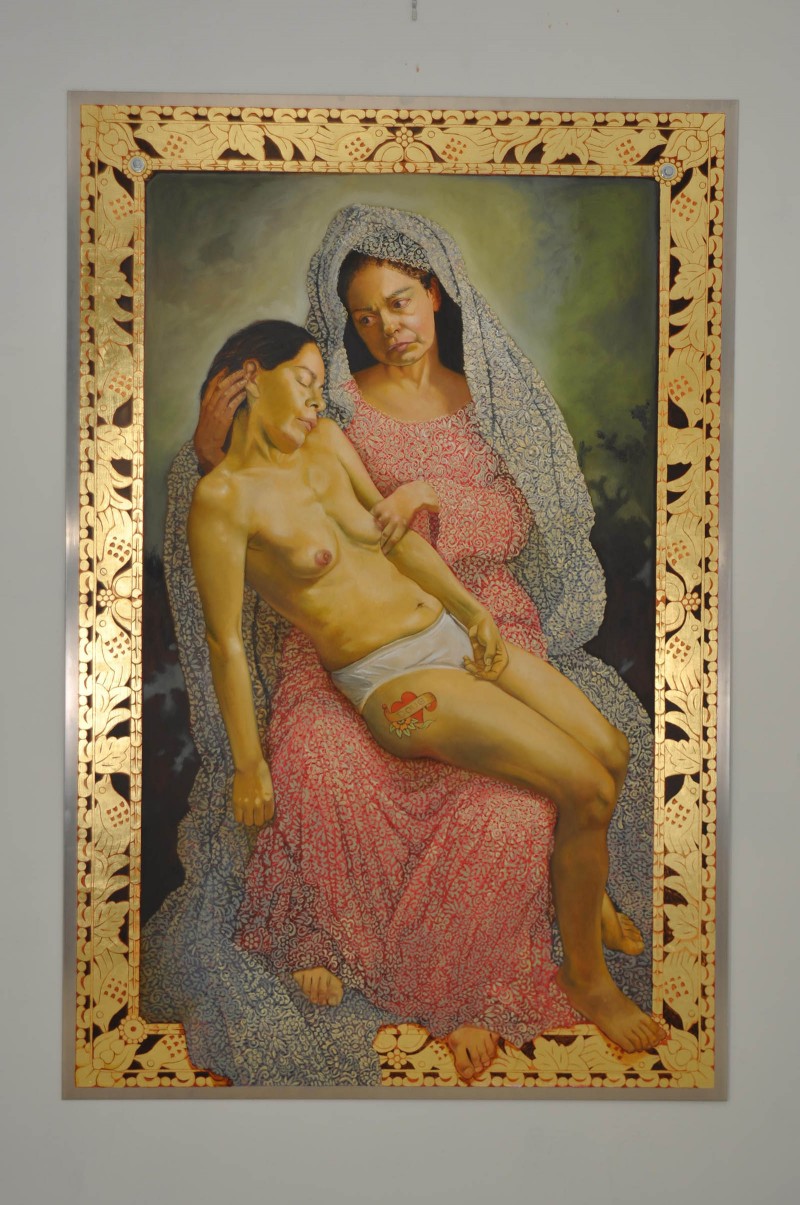
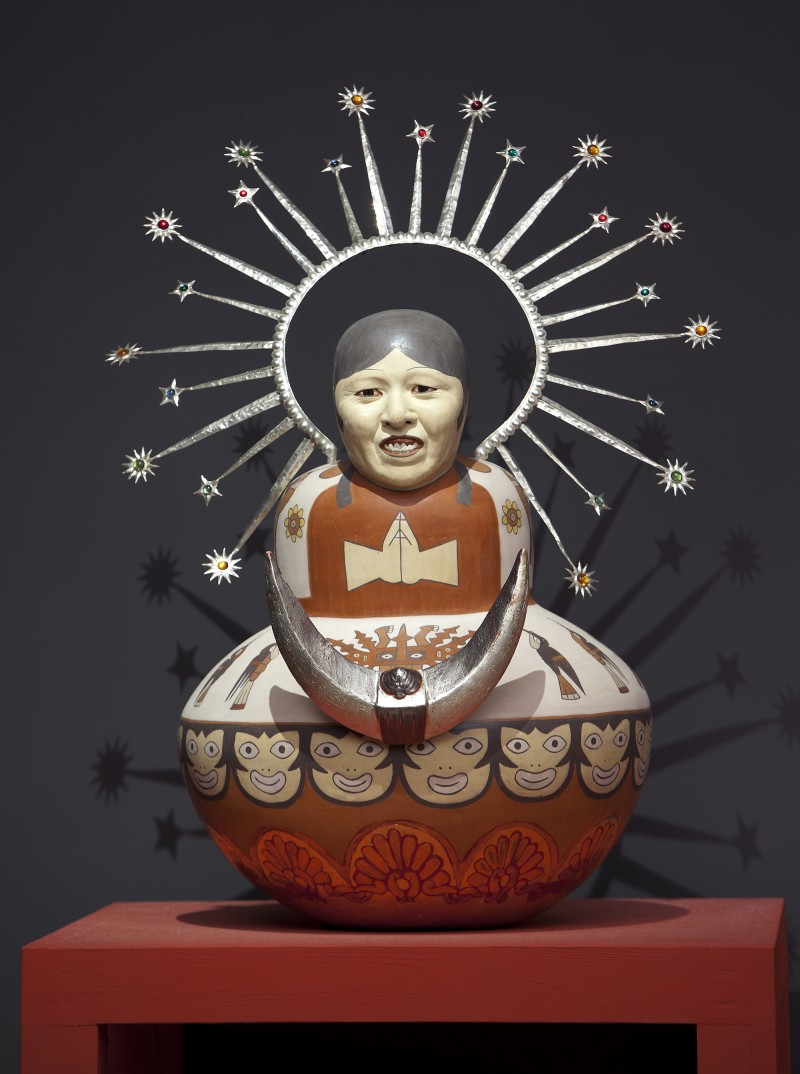
Kukuli Velarde describes Corpus and also discusses her painting practice in this installment of Artblog Radio, recorded in the artist’s home and studio in Philadelphia on Dec. 11, 2015. More about the artist at her website.
You can listen to Artblog Radio on Apple and Spotify.
